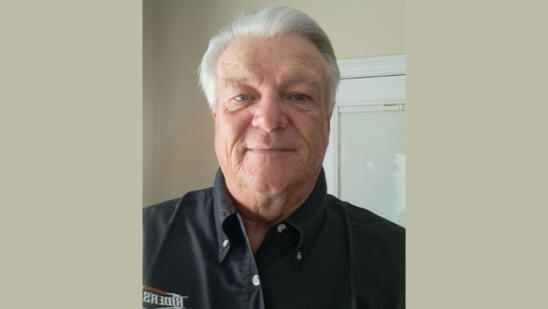In 2007, rural Manitowoc County, Wisconsin, garnered national attention when Steven Avery stood trial for murdering 25-year-old Teresa Halbach. Halbach, a photographer for an online car marketplace, vanished on Halloween 2005 while on assignment at an auto salvage yard owned by Avery’s family, in Mishicot. Avery lived in a trailer on the property.
On November 5, 2005, a volunteer searcher found Halbach’s Toyota RAV4 under some brush and auto parts at Avery’s family’s salvage yard. That same day, police searched Avery’s cabin. The next day, police seized Avery’s car and a flatbed truck.
Those events led Avery to accuse cops of framing him as retribution for suing Manitowoc County, its former sheriff and former district attorney in 2003 for $36 million. The lawsuit stemmed from the 18 years he spent in prison for a 1985 rape he didn’t commit.
“I’m afraid. I heard tonight that a cop put [Halbach’s] car in the [Avery salvage] yard,” Avery told the Wisconsin State Journal.
[Stream Accused: Guilty or Innocent? in the A&E app.]
In 1985, Avery was sentenced to 32 years for raping a woman along the Lake Michigan shoreline. In 1995, DNA from under the victim’s fingernails was determined to belong to an unknown person, but it didn’t rule out Avery as a suspect. Avery was not granted a new trial.
In April 2002, the Wisconsin Innocence Project had hairs tested from the crime scene. DNA from the hairs belonged to Gregory Allen, a felon who resembled Avery and was already serving a 60-year sentence for another sexual assault. Avery was exonerated and released from prison in September 2003. Soon after he filed the civil lawsuit, claiming police misconduct and civil rights violations.
A day after Halbach’s car was found, police arrested Avery for possessing firearms with felony convictions, which included burglary. The following day, police said they found bone fragments and teeth in a burn pit behind Avery’s garage. The discovery led to Avery being charged with Halbach’s murder.
Avery wasn’t the only person implicated in Halbach’s slaying.
In March 2006, Avery’s 16-year-old nephew, Brendan Dassey, was charged with first-degree intentional homicide and first-degree sexual assault. According to authorities, Dassey said he went to Avery’s trailer on Halloween 2005 and heard Halbach yell, “Help me.” Dassey also recalled finding Halbach nude and shackled to Avery’s bed. The teen then confessed to raping Halbach with Avery before slitting her throat and burning her body.
The Milwaukee Journal Sentinel reported that authorities deemed Avery a suspect from the start of their investigation. Avery remains adamant he didn’t kill Halbach—and that officials targeted him because of his 2003 exoneration and lawsuit.
In March 2007, a jury convicted Avery of first-degree intentional homicide and firearms charges but acquitted him of mutilating Halbach’s corpse. He was sentenced to life in prison without the possibility of parole.
The next month, Dassey was convicted of first-degree intentional homicide, second-degree sexual assault and mutilation of a corpse. No physical evidence tied Dassey to Halbach’s slaying, but a taped confession was central in his conviction—despite testifying that the confession was “made up.” Dassey, who was charged as an adult, was sentenced to life in prison and is eligible for parole in 2048.
Avery’s Trial and Conviction
Reporter Dan O’Donnell was 25 when he covered Avery’s murder trial for Milwaukee radio station WTMJ. He tells A&E True Crime that Avery’s trial didn’t seem “out of the ordinary.” But Avery’s prior dealings with the legal system piqued the public’s interest.
“Obviously him being convicted of the 1985 rape kind of lent some credence to it,” O’Donnell says, referring to Avery’s claims of malicious prosecution.
According to O’Donnell, news of Avery’s arrest for Halbach’s murder came as a shock since the community regarded Avery as unjaded, despite being wrongfully imprisoned for almost two decades.
“After he was released from prison—and I think people kind of forget this—he was really a beloved figure in Wisconsin,” says O’Donnell. “He seemed like he wasn’t at all bitter [that] he spent 18 years in prison for a crime he didn’t commit. He was just seen as this kindly dude who was totally railroaded by the justice system.”
Days after Avery’s release in 2003, Wisconsin Governor Jim Doyle said he supported increasing the $25,000 limit that a wrongfully convicted person gets for every year spent incarcerated. In law school at the time, O’Donnell recalls Avery meeting with politicians regarding his exoneration before he was eyed as the prime suspect in Halbach’s disappearance.
“After that, there was a ton of interest [in Avery],” says O’Donnell, who launched a podcast series about the case.
O’Donnell claims that at the time of Avery’s 2007 trial, people were not convinced he was being framed. “A lot of people saw the evidence [against Avery],” he says.
O’Donnell, who’s now a political talk show host at WISN, claims he received criticism from Avery supporters after releasing the podcast. He maintains that evidence presented in charging documents and at trial provided a strong case that Avery and Dassey killed Halbach.
To O’Donnell, Dassey’s confession was critical as investigators couldn’t explain why Halbach’s blood was in the back of her RAV4. Dassey told investigators that he and Avery put Halbach’s body in the backseat of her car, where Avery shot her. Dassey said Avery drove her car and he was a passenger. Dassey changed his story throughout his interrogations—also stating that Halbach was shot outside and on a garage floor.
“To me, the best evidence is… the forensic analysts were able to definitively say [the bone fragments on the Avery property] came from her,” O’Donnell says. “The rivet from her jeans was in his burn barrel. You’ve got a bullet fragment with her DNA that passed through her skull. All of that added it up.”
What Prison Life Is Like for Avery
Avery is currently at the Waupun Correctional Institution, a maximum-security prison in Wisconsin that housed 934 inmates as of June 2021. Twenty percent of prisoners are serving life sentences, and 92 percent and 23 percent of inmates are incarcerated for violent and sexual offenses, respectively.
Avery’s ex-fiancée Sandy Greenman tells A&E True Crime that Avery is a model inmate who has never faced discipline. Greenman says she talks on the phone with Avery almost every day. COVID restrictions have halted their in-person visits.
“People like to say, ‘Steven Avery has been violent all his life.’ Not true,” she says, “He has not had one ticket [infraction] in almost 35 years of being incarcerated.”
Avery reportedly has his own cell, which he is not allowed to leave to eat. He usually only leaves his cell to shower, according to Greenman.
“He doesn’t go to rec[reation] mainly because he doesn’t wanna go to rec; that’s his own choice. He does get to the law library once in a while,” she says. “We think [about] back then and what could have happened. We have a lot of suspects in mind, a lot of theories in mind, so we talk about that.”
Greenman claims Avery never argues with or questions the prison guards, though there are times when he grows frustrated with his predicament.
“Steven…doesn’t look at his sentence as a life sentence,” Greenman says. “He just knows he’s going to be set free and it may take a long time. It may take many more years, but he’s still positive he’s going to going to be set free. He knows he’s innocent.”
Avery regularly responds to letters from supporters, and sometimes calls them or talks to them on Zoom. Greenman runs a Facebook group dedicated to Avery’s innocence, and she often posts thank-you notes, which Avery addresses to the 22,000 members. Greenman believes Avery is legally barred from corresponding with Dassey, who is incarcerated at Oshkosh Correctional Institution in Wisconsin.
According to Greenman, Avery hasn’t written letters lately because he’s working on his case. He’s been focused on recalling memories from when Halbach vanished in hopes of uncovering new information.
Avery’s Next Steps
Avery is currently represented by attorney Kathleen Zellner. In January 2022, Zellner said she plans to file a new petition which includes a “huge amount of new evidence.” Otherwise, updates in Avery’s case have stalled.
In November 2021, the Wisconsin Supreme Court declined to review Avery’s case. Zellner petitioned the state’s highest court after a state appeals court ruled that Avery’s various claims—including ineffective counsel and evidence mishandling—were not enough to merit a hearing.
“If you’re so sure that you have the right man in prison, and you know it without a shadow of a doubt, what are you afraid of? Why not give him another trial with another jury and all the proof out there?” asks Greenman. “And if he’s convicted of murder again, well, then he’ll shut up and go away. But they don’t want that out. So they don’t want to go to court again.”
On March 17, 2022, Zellner tweeted: “We are working every day on Steven Avery’s case and we are making substantial progress. We will never give up in our quest to rectify this miscarriage of justice.”
Greenman and other skeptics still raise concerns about various factors in Avery’s case—including whether the bones in the burn pit belong to Halbach and why they were given to her family in 2011. While victims are often overshadowed in high-profile cases, Greenman says Avery is not acting with only himself in mind.
“He is more interested in justice than in his own case,” Greenman says. “He wants to do something to stop this from ever happening to anybody else. Because Theresa Halbach has not gotten justice either.”
Related Features:
Brendan Dassey: Why Do People Confess to Crimes They Later Say They Didn’t Commit?


